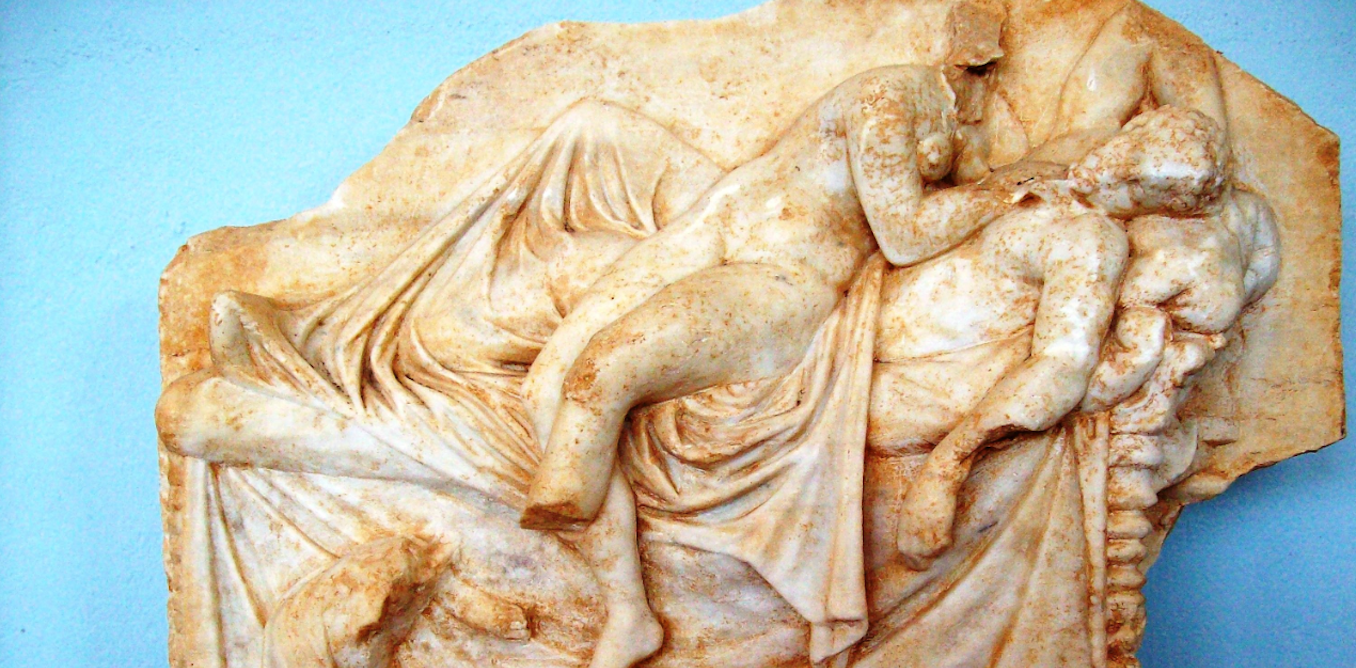Before he considered himself an artist, Demond Melancon boiled lobster at the Louisiana chain restaurant Drago’s Seafood, washed dishes at Emeril’s, and poured concrete for Hard Rock Construction. He laid and smoothed the cement walkway in front of Arthur Roger, a gallery on Julia Street in downtown New Orleans. Over 10 years later, that same gallery now represents his work.
“I used to work all day and bead all night. Now, I get to bead full-time. And this way is better,” Melancon told ARTnews, with a laugh, during a studio visit last fall. “I can’t live without my beads. I can’t wait to get up in the morning to do this work.”
Big Chief Melancon—as he is known in his community, the Young Seminole Hunters—began making Mardi Gras Indian suits 30 years ago in a laborious process requiring thousands of hours and innumerable beads, glass rhinestones, and feathers. When crafting a suit, Melancon aims to summon ancestral forebearers to realize what he describes as a-koo-chi-mali—Black masking energy embodied when the suit is made, adorned, and activated in performance.
“Making the suits is spiritual practice. There’s an elder presence in this work,” Melancon said.
On Mardi Gras day, dozens of masking Indian tribes meet each other in the streets of the Lower Ninth Ward in competitive battles of performance and percussion, singing to honor the history and culture of Indigenous peoples who welcomed those escaping enslavement into Native communities outside of New Orleans before and after emancipation.
Though now referred to as “Mardi Gras Indians,” Black participants were originally forbidden from participating in Mardi Gras celebrations. In refusal and rebellion of this restriction, Black revelers and the descendants of these hybrid communities came together as Masking Indians to create their own Carnival. On his suits, Melancon features Nyabinghi warriors from Central Africa, Emperor Haile Selassie and Empress Menen of Ethiopia, Shaka Zulu warriors, the Louisiana enslaved dancer Bras-Coupé, and other under-studied figures of African and African diaspora histories. “I’m big on studying—there’s a lot of research before I start to bead,” Melancon said.
For “Ten Thousand Suns,” the 2024 edition of the Biennale of Sydney in Australia, Melancon has on display two beaded aprons deconstructed from Mardi Gras suits he wore in 2011 and 2013. One features large profiles of Lakota leaders Sitting Bull and Red Cloud overlooking layers of the state of Louisiana, the Egyptian Khufu Valley Temple pyramid, and First Nations peoples dancing, drumming, and praying amid land, sky, and water.
“If I break a suit down, the work is transformed into art objects, into contemporary art pieces,” he said. “In the gallery, that work catches the viewer, it gets the viewer, just like if I was wearing the whole suit. The spirit is still in them. The gallery doesn’t transform the suit pieces—the a-koo-chi-mali transforms the space.”
In addition to the patches, aprons, headpieces, fans, and other components that comprise one of these suits, Melancon makes work not ever intended for wearing but exclusively for the wall. In the context of the gallery, Melancon often shows patch-like beaded portraits that feature icons of history, music, and art: Tina Turner, Aretha Franklin, Barkley L. Hendricks, Big Freedia, Harriet Tubman, and more. These familiar faces, their adornments, surroundings, and borders, are all composed and textured with impossibly small glass beads.
“I want to wow people with my beads. You gotta show people what you can do,” he said.

To create these designs, like those on his suits, Melancon drafts the outline of the images in pencil on stretched canvas before solidifying the line with pen. He often sketches in collaboration with friends and colleagues and is accompanied in the creative process each day by his wife and collaborator of 19 years, Alicia Melancon, who has a hand in the majority of his work.
Melancon and his wife start every morning with a walk together before turning their hands to beadwork. “She’s my right hand,” he explained. “She’s a maker, a critic, and everything in one. Without my wife, I wouldn’t be making this work. She’s a Big Queen.”

After selecting the most symmetrical beads, Melancon painstakingly affixes every piece of glass individually with a needle and nylon-cotton thread in a tacking lockstitch. Beeswax rubbed into the thread with nimble fingers ensures the strength and flexibility of the chord. In his studio, Melancon has hundreds of pounds of beads—opaque, transparent, matte, and metallic, as small as 2 millimeters, and sourced from around the world. When completed, his suits, too, can weigh upwards of a hundred pounds. When asked about the physical tolls of this work, Melancon simply shrugged, admitting to some pain in his back and wrists. But his fingers, he said, beginning to smile, “are like bricks.”
Melancon sees his work, which at first may seem to have more in common with sculpture, as a kind of painting in the vein of Michelangelo, Caravaggio, or Kerry James Marshall—figurative artists whose paintings Melancon describes as coming off the wall or off the canvas “like magic.” His practice, highly resonant with portraiture and history painting, also shares great affinities with draftsmanship, collage, embroidery, performance, worldbuilding, song, rebellion, community activism, and memory preservation.

Last fall, his studio was packed with various historical and fantastical scenes, in-progress Victorian portraits, and one or two large patches for an upcoming Mardi Gras suit. Those patches were covered by a large cloth for my visit—they are private and secret until Melancon adorns them on his suit for Mardi Gras day. His practice, like the Black Masking tradition itself, holds various levels of representation and opacity, depending on how active the viewer is in these communities.
Glass beads themselves are, in their most basic material form, grains of sand. As anthropologist Vanessa Agard-Jones explores in the article, “What the Sands Remember,” sand is both a bridge and a boundary territory between water and earth, providing shifting ground and geological legacy in both worlds. That’s especially true in Melancon’s hometown of New Orleans, a place built below sea level that continues to lose land to rising and warming waters. What does it mean to adorn the body, to adorn art spaces, in this glassy substance that is of both land and sea? Melancon’s work dances in the streets on Mardi Gras day and then, in formidable stillness, holds space in galleries and museums. His finished objects, like his materials, move through multiple worlds.
“Who are the Indians? We walk on water and can’t get wet,” Melancon said. “I love to bead water. I know when I bead, I walk on water. The elders taught me that.”

The post “In His Mardi Gras Suits and Beadwork Paintings, Demond Melancon Creates Compelling Tensions between Representation and Opacity” by Maximilíano Durón was published on 06/04/2024 by www.artnews.com




































